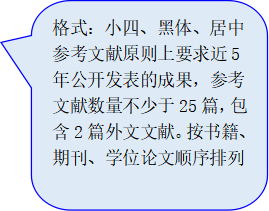 引言
引言
XXXXXXXXXXXXXXXXXXXXXXXXXXXXXXXXXXXXXXXXXXXXXXXXXXXXXXXXXXXXXXXXXXXXXXXXXXXXXXXXXXXXXXXXXXXXXXXXXXXXXXXXXXXXXXXXXXXXXXXXXXXXXXXXXXXXXXXXXXXXXXXXXXXXXXXXXXXXXXXXXXXXXXXXXXXXXXXXXXXXXXXXXXXXXXXXXXXXXXXXXXXXXXXXXXXXXXXXXXXXXXXXXXXXXXXXXXXXXXXXXXXXXXXXXXXXXXXXXXXXXXXXXXXXXXXXXXXXXXXXXXXXXXXXXXXXXXXXXXXXXXXXXXXXXXXXXXXXXXXXXXXXXXXXXXXXXXXXXXXXXXXXXXXXXXXXXXXXXXXXXXXXXXXXXXXXXXXXXXXXXXXXXXXXXXXXXXXXXXXXXXXXXXXXXXXXXXXXXXXXXXXXXXXXXXXXXXXXXXXXXXXXXXXXXXXXXXXXXXXXXXXXXXXXXXXXXXXXXXXXXXXXXXXXXXXXXXXXXXXXXXXXXXXXXXXXXXXXXXXXXXXXXXXXXXXXXXXXXXXXXXXXXXXXXXXXXXXXXXXXXXXXXXXXXX。
 XXXXXXXXXXXXXXXXXXXXXXXXXXXXXXXXXXXXXXXXXXXXXXXXXXXXXXXXXXXXXXXXXXXXXXXXXXXXXXXXXXXXXXXXXXXXXXXXXXXXXXXXXXXXXXXXXXXXXXXXXXXXXXXXXXXXXXXXXXXXXXXXXXXXXXXXXXXXXXXXXXXXXXXXXXXXXXXXXXXXXXXXXXXXXXXXXXXXXXXXXXXXXXXXXXXXXXXXXXXXXXXXXXXXXXXXXXXXXXXXXXXXXXXXXXXXXXXXXXXXXXXXXXXXXXXXXXXXXXXXXXXXXXXXXXXXXXXXXXXXXXXXXXXXXXXXXXXXXXXXXXXXXXXXXXXXXXXXXXXXXXXXXXXXXXXXXXXXXXXXXXXXXXXXXXXXXXXXXXXXXXXXXXXXXXXXXXXXXXXXXXXXXXXXXXXXXXXXXXXXXXXXXXXXXXXXXXXXXXXXXXXXXXXXXXXXXXXXXXXXXXXX,我们也开始思考问题的根源。
XXXXXXXXXXXXXXXXXXXXXXXXXXXXXXXXXXXXXXXXXXXXXXXXXXXXXXXXXXXXXXXXXXXXXXXXXXXXXXXXXXXXXXXXXXXXXXXXXXXXXXXXXXXXXXXXXXXXXXXXXXXXXXXXXXXXXXXXXXXXXXXXXXXXXXXXXXXXXXXXXXXXXXXXXXXXXXXXXXXXXXXXXXXXXXXXXXXXXXXXXXXXXXXXXXXXXXXXXXXXXXXXXXXXXXXXXXXXXXXXXXXXXXXXXXXXXXXXXXXXXXXXXXXXXXXXXXXXXXXXXXXXXXXXXXXXXXXXXXXXXXXXXXXXXXXXXXXXXXXXXXXXXXXXXXXXXXXXXXXXXXXXXXXXXXXXXXXXXXXXXXXXXXXXXXXXXXXXXXXXXXXXXXXXXXXXXXXXXXXXXXXXXXXXXXXXXXXXXXXXXXXXXXXXXXXXXXXXXXXXXXXXXXXXXXXXXXXXXXXXXXXX,我们也开始思考问题的根源。
一、

 基本理论问题厘定
基本理论问题厘定
(一)核心概念界定
 1.劳动
1.劳动
 劳动一般被认为是一种能创造外部劳动量和价值的人类运动,是使人具有生存和发展能力的基本手段。除了人的载体外,在商品生产体系中,劳动也被定义为劳动力的支出和使用。[]在马克思看来,劳动是使用劳动力的过程。购买劳动力的主体是消耗劳动力,这可以当作是劳动力卖方所做的劳动。《辞海》对劳动做出的解释就是人们改变劳动对象使之适合自己需要的有目的的活动,即劳动力的支出和使用。[]《教育大词典》和《现代汉语词典》也解释了“劳动”这个词。
劳动一般被认为是一种能创造外部劳动量和价值的人类运动,是使人具有生存和发展能力的基本手段。除了人的载体外,在商品生产体系中,劳动也被定义为劳动力的支出和使用。[]在马克思看来,劳动是使用劳动力的过程。购买劳动力的主体是消耗劳动力,这可以当作是劳动力卖方所做的劳动。《辞海》对劳动做出的解释就是人们改变劳动对象使之适合自己需要的有目的的活动,即劳动力的支出和使用。[]《教育大词典》和《现代汉语词典》也解释了“劳动”这个词。
2.劳动教育
《教育大辞典》从实践的角度对劳动教育进行了阐释:“劳动教育是培养学生积极健康的劳动态度、劳动习惯、劳动观念的教育。它强调教育中的劳动、技术和生产要素,目的在于提高学生关于工农业方面的基本素质和技能
《中国大百科全书•教育》认为劳动教育是道德教育的重要组成部分。其目的是使学生树立积极、科学、正确的劳动观,通过培养劳动习惯,使他们成为热爱劳动的公民。
虽然有所差异,但其基本含义相对较近。在本文的研究中,认为“劳动教育”是劳动与教育的结合,是教育者通过理论教学和实践活动对学生实施的教育教学过程。内涵是劳动观念、劳动意识和劳动能力,以促进受教育者德、智、体、美、心等共同发展。劳动教育是劳动与教育的统一,劳动不仅是教育的过程,也是教育的根本目的。
3.学校劳动教育
 学校劳动教育是指在学校环境中进行的有规律、有系统、规范化、有组织、有系统的教育活动。学校劳动教育配备专职教育工作者,服务于特定的对象,具有自身的特殊性。
学校劳动教育是指在学校环境中进行的有规律、有系统、规范化、有组织、有系统的教育活动。学校劳动教育配备专职教育工作者,服务于特定的对象,具有自身的特殊性。
(二)劳动教育的重要意义
学校劳动教育对促进学生全面发展具有不可替代的作用。
 1.XXXXXXXXXXXXXXXXXXXXXXXXXXXXXXXXXXXXXXX
1.XXXXXXXXXXXXXXXXXXXXXXXXXXXXXXXXXXXXXXX
(1)XXXXXXXXXXXXXXXXXXX
二、……现状调查与原因分析
 (一)现状调查
(一)现状调查
1.调查方法
本研究采用问卷调查法。通过阅读……的相关文献,并结合课堂观察,研究者编制了《……调查问卷》(见附录3)。调查问卷共分两个部分。第一部分为调查对象的基本信息,包括性别、年龄、学历等,共6题;第二部分是关于……的现状调查题目,共7题,内容涉及……,力求探索出目前小学……存在的主要问题。
2.调查过程
 为了了解……的真实状况,研究者于2019年9月-12月间对开发区4所学校共146名中高段小学语文教师进行调查研究。回收问卷142份,其中有效问卷139份,回收率97.3%。
为了了解……的真实状况,研究者于2019年9月-12月间对开发区4所学校共146名中高段小学语文教师进行调查研究。回收问卷142份,其中有效问卷139份,回收率97.3%。
表1.1 教师访谈人员信息统计表
性别
|
职务
|
年龄
|
学历
|
教龄
|
执教学段
|
女
|
班主任
|
25
|
本科
|
2
|
低段
|
女
|
语文教师
|
24
|
本科
|
1
|
低段
|
男
|
班主任
|
30
|
本科
|
5
|
中段
|
女
|
语文教师
|
29
|
本科
|
5
|
中段
|
女
|
班主任
|
29
|
本科
|
5
|
高段
|
女
|
语文教师
|
32
|
本科
|
8
|
高段
|
女
|
语文教师
|
33
|
本科
|
3
|
高段
|
男
|
年级组长
|
30
|
本科
|
7
|
中段
|
女
|
班主任
|
27
|
研究生
|
2
|
低段
|
女
|
语文老师
|
25
|
本科
|
2
|
低段
|
女
|
班主任
|
37
|
本科
|
13
|
低段
|
女
|
班主任
|
32
|
研究生
|
8
|
高段
|
男
|
班主任
|
28
|
研究生
|
3
|
中段
|
女
|
语文教师
|
26
|
研究生
|
2
|
中段
|
女
|
语文老师
|
29
|
本科
|
5
|
高段
|
女
|
语文教师
|
27
|
研究生
|
2
|
高段
|
3.调查结果分析
(1)学生对劳动教育的认识
通过学生问卷,对“劳动的态度”的调查得知(如图1所示),83.08%的中小学生认为劳动高尚、喜欢劳动;3.08%的学生认为劳动低下、讨厌劳动;13.85%的学生对劳动没什么感觉。可见大部分学生还是喜欢劳动的,少部分讨厌劳动。

图1:
学生劳动的态度
通过学生问卷,对“你愿意在学校打扫卫生”的调查得知(如图2所示),75.38%的中小学生很乐意;16.92%的学生不愿意,但不得不做;6.15%的学生经常偷懒不做;1.54%的学生从来没做过。
通过学生问卷,对“你所在的学校劳动课一周有几课时”的调查得知(如图3所示),30.77%的学校有一课时;41.54%的中小学有两课时;16.92%的学校有三课时以上;还有10.77%的学生不清楚所在学校是否有劳动课。

图2:
所在学校劳动课
的周学时情况
(二)存在的主要问题
调查研究发现,在新课改理念的推行下,小学……已取得一定成绩:……。但是,仍然存在不少问题有待完善。
1.********
………………………………………………
2.*******
……………………
 3.*******
3.*******
…………………………
(三)现存问题的原因分析
1.********
………………………………………………
2.*******
……………………
3.*******
…………………………
 结语
结语
劳动教育是素质教育的必然要求,是培养学生核心素养的重要举措,尤其是要求中小学生适当参加必要的劳动实践活动,对促进学生的身心全面发展是非常必要的。然后,当今的劳动教育出现了严重的异化,在现实生活中,由于受多种因素的影响,很多人对劳动和劳动教育存在一些狭隘的理解和片面的认识。劳动教育也经常被忽视,劳动教育的内涵、本质和功能还没有得到相应的认可。然而劳动是人类生存、社会发展的基础,教育源于劳动,如何在劳动和学生之间架起一座桥梁?实现完美的引导,这是我们需要深入思考的问题。劳动教育不只是简单地训练技能,养成习惯,而应该看成是在学校、家长和社会的通力合作下,帮衬学生确立正确的劳动概念和认识,培养学生的积极性和喜爱劳动的精神,提升学生的劳动才能。
同时,我也将继续关注中小学劳动教育的发展及其存在的问题。我也深信,随着更多优秀的人关注这一问题,再加上理论概念和研究方法的提高,中小学的劳动教育状况定会得到改善,劳动教育将不被漠视,学生将得到更好的发展。培养学生爱劳动的精神,使我们国家的传统美德得以传承,用劳动来支持我们的中国梦!

 参考文献
参考文献
[1]顾明远,石中英.国家中长期教育改革和发展规划纲要(2010-2020 年)解读[M].北京:
北京师范大学出版社,2010.
[2]赵荣辉.劳动教育及其合理性研究[M].北京:中央民族大学出版社,2012.
[3]孙仲仪.学生热爱劳动教育与班级主题活动[M].合肥:安徽人民出版社,2012.
[4]裴斯泰洛齐.林哈德与葛笃德[M].北京:人民教育出版社,2005.
[5]陈波编注,陈波.陶行知教育文选[M].浙江大学出版社,2014.
[6]程晗.《关于加强中小学劳动教育的意见》重点解读[J].中小学教材教学,2016(01).
[7]王爽.当代小学劳动教育现状及问题研究——以大连市为例[J].群文天地,2012(04).
[8]游蠡.劳动以成人:乌申斯基劳动教育思想探析[J].天津市教科院学报,2018(03).
[9]刘向兵,闻效仪.通过新时代劳动教育引领和推动人力资源开发建设[J].教育经济评论,2019,4(01).
[10]谷贤林.美国学校如何开展劳动教育[J].人民教育,2018(21).
[11].《国家中长期教育改革和发展规划纲要(2010-2020年)》节选[J].教育科学论坛,2017(20).
[12]刘西亚.学校劳动教育途径初探[J].中国农村教育,2009(Z2).
[13]章振乐,陈万勇.立己达人:劳动教育的推广与振兴之路——全国劳动教育实验学校联盟的价值追求与运作实施[J].中小学德育,2018(07).
[14]高实.让劳动教育回归学校教育之中[J].吉林省教育学院学报(中旬),2014,30(12).
[15]高维,于善萌.我国中小学劳动教育研究的回顾与展望[J].现代基础教育研究,2017,28(04).
[16]周德文.学校有效开展劳动教育浅析[J].基础教育研究,2017(10).
[17]王维审.中小学劳动教育的实践与发展概述[J].中小学德育,2018(07).
[18]王绍梁.从“劳动光荣”到“劳动幸福”:当代青少年劳动价值观的转变[J].青年学报,2019(01).
[19]陈静,黄忠敬.从“体力教育”到“能力教育”——我国劳动教育政策的发展与变迁[J].中国德育,2015(16).
[20]何欢.当前我国中小学劳动教育存在的问题及解决路径[J].内蒙古教育,2018(24).
[21]张莉莉.劳动教育的实施方略[J].中国德育,2012(14).
[22].教育部 共青团中央 全国少工委 关于加强中小学劳动教育的意见[J].中国农村教育,2015(10).
[23]徐仲武.劳动教育,学校如何做“真”[J].中国教师,2016(10).
[24]John Schmidman, John J .Marrone, John Remington. Labor Education as a method of enhancing employee rights and responsibilities [J].Employee Responsibilities and Rights Journal, 1990(04).
[25]Yangyi Kwon.The developmental history of labor education in South Kore [J].Sociology of education .2010(11).
附录1
 美国劳动教育
美国劳动教育
 肯尼斯•d•卡尔森
肯尼斯•d•卡尔森
罗格斯大学
 对非学校组织(如工会)的教育实践进行分析,为与学校进行比较提供了机会。可以将非学校组织的目标、方法和内容与学校组织的目标、方法和内容进行对比,以确定冲突和兼容性以及相对有效性的领域。
对非学校组织(如工会)的教育实践进行分析,为与学校进行比较提供了机会。可以将非学校组织的目标、方法和内容与学校组织的目标、方法和内容进行对比,以确定冲突和兼容性以及相对有效性的领域。
教师可以通过对工会教育项目的调查来检查他们向学生展示的工会形象。本研究建议有必要修订社会科学课程大纲和与课程大纲一起使用的教材中劳动待遇的规定。本研究可为社会研究教师提供有关工会教育材料的启示,以作为有组织劳工教学的主要资源。
越来越多的国家通过立法规定了教师的集体谈判权,这就要求教师及其组织领导人了解其他组织在集体谈判规则下实现其目标的运作情况。这项研究提供了一些关于这些操作的知识。
本研究可提供工会教育的基本原理,可能对教育、社会学、政治学或劳资关系专业的学生有所帮助。它可能构成分析其他形式的社会和领导教育的模式。
本研究的结果和结论可为工会评估和改进其教育功能提供参考。本研究对于协助联盟教育计画发展与实施的教育工作者也有重要意义。
劳动教育的一般性质
劳动教育反映了美国的工会主义,工会主义又反映了美国的文化。美国文化的实用主义、唯物主义、自私、反知识分子、反审美和反人道主义的性质渗透在有组织的劳工及其教育项目中(雅培,1962;培根,1962)。因此,劳动教育不是意识形态的。相反,Eby(1965)对美国工会主义的描述也适用于劳动教育:它是出于贡培主义和实用主义,而不是马克思主义和费边主义。三十年代的社会工会主义,表现在合并服装工人、女装工人、布鲁克伍德劳动学院、兰德学院和威斯康辛工人学校的教育计划中,只是贯穿美国历史大部分时期的商业工会主义的一个插曲(塔夫脱,1963)。
工会现在的运作“不质疑经济的终极资本主义本质,也没有改革现有机构的宏伟计划”(科恩,1957,第139页)。这种对资本主义的接受在各级有组织的劳工中普遍存在。沃尔特·鲁瑟是资本主义的狂热拥护者(布兰登,1959;威迪克,1964,第188-189页);大多数高级劳工领导人甚至更坚定地支持这一制度。工党的二流领导人也“坚定地致力于支持资本主义的生产方式[Peck, 1963, pp. 296-297]。”由于他们从金融体系中获利较少,普通民众对资本主义的热情可能会降低;然而,资本主义至少得到了他们的默许(Kornhauser, 1961;沃克与盖斯特出版社,1952年)。
劳工教育与商业工会主义的亲资本主义相呼应,这并不奇怪。正如工会主义者暑期研讨会的教学大纲所示(Kerrison & Levine, 1960, pp. 139-145),资本主义是劳工教育课程中认可的主题,而不是讨论的主题。
领导力培训
企业工会主义和企业一样重视组织问题。工会领袖和商业领袖都同意同样的绝对命令:采取行动以促进本组织的生存和增长(布劳,1956年)。因此,工人教育的核心问题,当然反映了工人运动对其切身利益的看法,必然是工会的有效运作[Barbash, 1955, p. 93]。实际上,这通常意味着领导力培训。劳动教育在很大程度上是对工会基层干部的培训(Kerrison, 1951;林惇,1965;沼泽,1956)。
人们经常提到的强调军官培训的一个原因是,如果工会官员想要成功地与受过大学教育的管理人员竞争,这是必要的。大约七分之一的大学生是工商管理专业的学生,他们正在为在商界的职业生涯做准备(贝鲁特,1962年;克拉克,1962年)。在培训工会官员方面,高等教育的设施没有得到如此慷慨的扩展。因此,这种训练大部分是由工会自己进行的(Mire, 1956)。
工会对领导能力培训给予的优先考虑也因为工会事务日益复杂而得到了证明。由于工会涉及到更多的成员福利领域,领导者必须履行和协调的任务在数量和微妙程度上都有所增加。问题更加复杂,解决问题的技巧也更加复杂。例如,合同提供了越来越精细的利益和权利,使合同的谈判和对因合同而引起的不满的解决复杂化。
工会官员接受的培训符合商业工会主义的务实本质。它包括诸如演讲、写作、议会程序、工会管理、合同谈判和申诉解决等工具主题。也就是说,劳动教育包括
很少的教育和大量的培训和信息[麦科勒姆,1962,第42页]。工会学校和协会几乎变成了专门的贸易学校(Widick, 1964)。女士服装工人工会协会是如此的实用,学员们被教导克服当地口音和着装(Kerrison & Levine, 1960)。
乘务员手册是一种简单的领导力培训方法。这些通常列举了管理人员应该和不应该执行的特定行为。当地工会有时举办培训班来完成或补充手册的功能。对于管事以上职等的人员,培训一般在会议和夏令营中进行。这些工作是在地方间进行的,有时是在联合的基础上进行的。
工会官员的大部分培训是通过大学的延伸课程进行的,尽管count和Brameld提出的建议,即各学院和大学为培训工会官员设立全面的工人教育学位授予部门(Kerrison, 1951)尚未得到实施。此外,劳动学院设在大学校园。然而,工会和大学之间的这种合作往往是紧张的。工会对大学持怀疑态度。他们将它们视为服务于商界的中产阶级飞地。他们知道商界人士在大学董事会中普遍存在。他们质疑大学教师的客观性(或者偏见的方向)。这些疑虑并没有被提议在工商管理学院内建立劳动教育项目的大学管理者所消除。即使工会主义者确信大学并不想破坏劳工,他们也怀疑大学是否能够理解并满足劳工的需求(Kerrison, 1951)。
就大学而言,它们有时不愿意接受劳动教育,因为它们认为这将使它们成为一个压力集团的合作者。他们担心自己的客观性,担心自己能否在保持客观性的同时,仍能满足劳动客户的期望。大学担心项目变得有偏见,而劳工则担心项目被稀释(Kerrison & Levine, 1960)。伦敦(1962)提出了大学缺乏热情的另一个原因。他认为,大学的服务功能被忽视了,取而代之的是教学和研究功能。只有当涉及到大笔咨询费时,大学才会专注于它的服务角色。
高校开展工会领导培训的另一个问题是缺乏合适的教学材料,这也是困扰非高校开展领导培训的一个问题。阅读材料往往过于复杂或没有涵盖所需的领域(Barbash, 1955;古尔德,1962)。即使有合适的阅读材料,也不总是有计划地使用它们。电影被发现不合适或使用不当。近年来,已采取措施克服材料方面的障碍。例如,芝加哥大学为教师开发了书面材料和指南,芝加哥的罗斯福学院购买了电影并开发了电影目录和讨论指南(Barbash, 1955)。
评估是领导力培训项目的另一个弱点,因为它是劳动教育的所有功能(Kerrison, 1951;Kerrison & Levine, 1960;Liveright, 1962;沼泽,1956)。通常,没有尝试或只是敷衍了事地尝试确定一个程序在实现其目标方面的成功程度。
 附录2
附录2
LABOR EDUCATION IN AMERICA
Kenneth D. Carlson
Rutgers University
An analysis of the educational practices of nonschool groups such as labor unions provides an opportunity for comparisons with schools. The goals, methodology, and content of nonschool organizations can be contrasted with those of the schools to ascertain areas of conflict and compatibility, as well as relative effectiveness.
An investigation of trade union education programs can be used by teachers to check the image of labor unions which they are presenting to their students. The study may suggest a necessity for revisions in the treatment of labor in social studies syllabi and in the teaching materials used in conjunction with the syllabi. The study may serve to enlighten social studies teachers about the availability of union education materials for use as primary sources in teaching about organized labor.
The legislative enactment of collective bargaining rights for teachers in a growing number of states makes it desirable that teachers and their organizational leaders have a knowledge of the operations by which other organizations have realized their goals under collective bargaining rules. This study supplies a knowledge of some of these operations.
The study can provide insights into the educational rationale of trade unions which may be of service to students of education, sociology, political science, or industrial relations. It may constitute a model for the analysis of other forms of social and leadership education.
The findings and conclusions of the study might be used by unions in evaluating and improving their educational function. The study also has significance for educators who will be assisting in the development and implementation of union education programs.
General Nature of Labor Education
Labor education reflects American trade unionism, which in turn reflects American culture. The pragmatic, materialistic, selfish, anti-intellectual, anti-aesthetic, and anti-humanitarian nature of American culture pervades organized labor and its education programs (Abbott, 1962; Bacon, 1962). Labor education, then, is not ideological. Rather, what Eby (1965) said of American trade unionism is also true of labor education: it was bor out of Gomperism and pragmatism, not Marxism and Fabianism. The social unionism of the thirties, expressed in the education programs of the Amalgamated Clothing Workers, the Ladies' Garment Workers, Brookwood Labor College, the Rand School, and the Wisconsin School for Workers, was only an interlude in the business unionism dominant throughout most of United States history (Taft, 1963).
Unions now operate "without questioning the ultimate capitalistic nature of the economy and with no grandiose plan for overhauling existing institutions [Cohen, 1957, p. 139]." This acceptance of capitalism prevails at all levels of organized labor. Walter Reuther was an ardent champion of capitalism (Brandon, 1959; Widick, 1964, pp. 188-189); most top labor leaders are even stronger supporters of the system. Labor's secondary leaders, too, "are firmly committed to the support of a capitalistic mode of production [Peck, 1963, pp. 296-297]." Since they have profited less from the system, the rank-and-file may feel less enthusiasm for capitalism; still, capitalism receives at least their acquiescence (Kornhauser, 1961; Walker & Guest, 1952).
It is not surprising that labor education echoes the pro-capitalism of business unionism. As the syllabus of a summer workshop for unionists indicates (Kerrison & Levine, 1960, pp. 139-145), capitalism is a subject for endorsement in labor education programs, not a subject for discussion.
Leadership Training
Business unionism puts the same stress on organizational concerns that business enterprises do. Union leaders and business leaders subscribe to the same categorical imperative: act so as to promote the survival and growth of the organization (Blau, 1956). Consequently, the central concern of workers' education, which of course reflects the way the labor movement views its vital interests, has necessarily been the effective and efficient functioning of the union [Barbash, 1955, p. 93]. In practice, this most often means leadership training. To a major extent, labor education is the training of the unions' lower level officers (Kerrison, 1951; Linton, 1965; Mire, 1956).
A reason frequently given for the stress on officer training is that it is necessary if union officers are to compete successfully with their collegetrained counterparts in management. About one out of every seven college students is a business administration major, preparing for a career in the business community (Beirne, 1962; Clark, 1962). The facilities of higher education are not so lavishly extended in the training of union officers. Thus, most of this training is undertaken by the unions themselves (Mire, 1956).
The priority which unions give to leadership training is also justified by the increasing complexity of union affairs. As unions involve themselves in more areas of their members' welfare, the tasks that the leaders must perform and coordinate increase in both number and subtlety. Issues are more intricate and techniques of resolution more sophisticated. Contracts, for example, provide ever more refined benefits and rights, complicating both the negotiation of the contracts and the settlement of grievances arising from them.
The training that union officers receive is in keeping with the pragmatic nature of business unionism. It consists of such tool subjects as speaking, writing, parliamentary procedure, union administration, contract negotiation, and grievance settlement. That is, labor education consists of
"very little education and a sizable chunk of training and information [McCollum, 1962, p. 42]." Union schools and institutes have become almost exclusively trade schools (Widick, 1964). The Ladies' Garment Workers Union Institute is so practical that trainees are taught to overcome localized accents and dress (Kerrison & Levine, 1960).
Stewards' manuals are a simple method of leadership training. These typically enumerate specific behaviors which stewards should and should not perform. Union locals sometimes have training classes which accomplish or supplement the function of the manuals. For officers above the rank of steward, training is commonly carried out in conferences and summer camps. These are conducted on an inter-local and sometimes interunion basis.
Much of the training of union officers is conducted through university extension classes, although the recommendation made by Counts and Brameld that colleges and universities create full-scale degree granting departments of workers' education for training union officers (Kerrison, 1951) has not been implemented. In addition, labor institutes are held on university campuses. This cooperation between unions and universities has often been strained, however. Unions are suspicious of universities. They see them as middle class enclaves which service the business community. They know about the prevalence of businessmen on university boards of trustees. They question the objectivity (or perhaps the direction of the bias) of university teachers. These misgivings are not allayed by the university administrators who propose establishing labor education programs within schools of business administration. Even when unionists are sure the university does not intend to undermine labor, they doubt whether the university can understand and meet labor's needs (Kerrison, 1951).
For their part, universities are sometimes reluctant to undertake labor education because they think this will make them collaborators of a pressure group. They worry about their objectivity and whether they will be able to maintain it and still meet the expectations of their labor clients. Universities worry about programs becoming biased, while labor worries about them being diluted (Kerrison & Levine, 1960). London (1962) proposed another reason for the universities' lack of enthusiasm. The service function of the university, he avers, is ignored in favor of teaching and research functions. Only when large consulting fees are involved does the university concentrate on its service role.
Another problem experienced by universities in their attempts at union leadership training is the shortage of suitable instructional materials, a problem which has also plagued nonuniversity conducted leadership training. Reading materials are often too complicated or do not cover the desired ground (Barbash, 1955; Gould, 1962). Even when appropriate reading materials are available, there is not always a carefully planned use of them. Films have been found inappropriate or have been inappropriately used. In recent years, steps have been taken to overcome the materials obstacle. For example, the University of Chicago developed written materials and guides for teachers, and Roosevelt College in Chicago acquired films and developed film catalogs and discussion guides (Barbash, 1955).
Evaluation is another weakness of leadership training programs, as it is of all functions of labor education (Kerrison, 1951; Kerrison & Levine, 1960; Liveright, 1962; Mire, 1956). Typically, no attempt or only a perfunctory attempt is made to determine how successful a program was in accomplishing its objectives.
The efforts of leadership teachers to gear their presentations to the interests and abilities of their audience have partly compensated for these weaknesses. The Union Leadership Academy at Rutgers administered an extensive battery of tests to increase the relevance of its efforts (Kerrison & Levine, 1960). To keep the attention of their audiences, leadership teachers usually employ a lecture-discussion method. They also adjust their vocabularies to the backgrounds of the students. These devices may sound like good teaching methods under any circumstances, but in union leadership training programs a great effort is made to practice them. Because of this attention to effective teaching methods, Kerrison (1951) remarked that "workers' education has maintained a close relationship with progressive education and educators [p. 97]."
There were several attempts made in recent years to liberalize the education of union officers, but the casual observer can easily be misled by this. The attempts were well publicized precisely because they were exceptions to the rule. Many, if not most, were foundation sponsored and were conducted through universities. This makes it difficult to gauge the extent of the unions' commitment to them. Actually, experience has shown that unions are not concerned with liberal education (Allen, 1962; Gould, 1962). At least one union publicly disclaimed responsibility for the general education of its membership (Kerrison & Levine, 1960). The total number of unionists involved in liberal education projects constitutes a minuscule proportion of the union officers in America; some of the projects were doomed to a poor response even before they began operating. They were designed to be sequential programs extended over a period of years (for examples, see Bacon, 1962; Kerrison & Levine, 1960), and since the programs were intended for union officers, only the students who managed to retain both their union posts and their educational motivation could reap the benefits.
附录3
 ……的调查问卷
……的调查问卷
 致谢
致谢